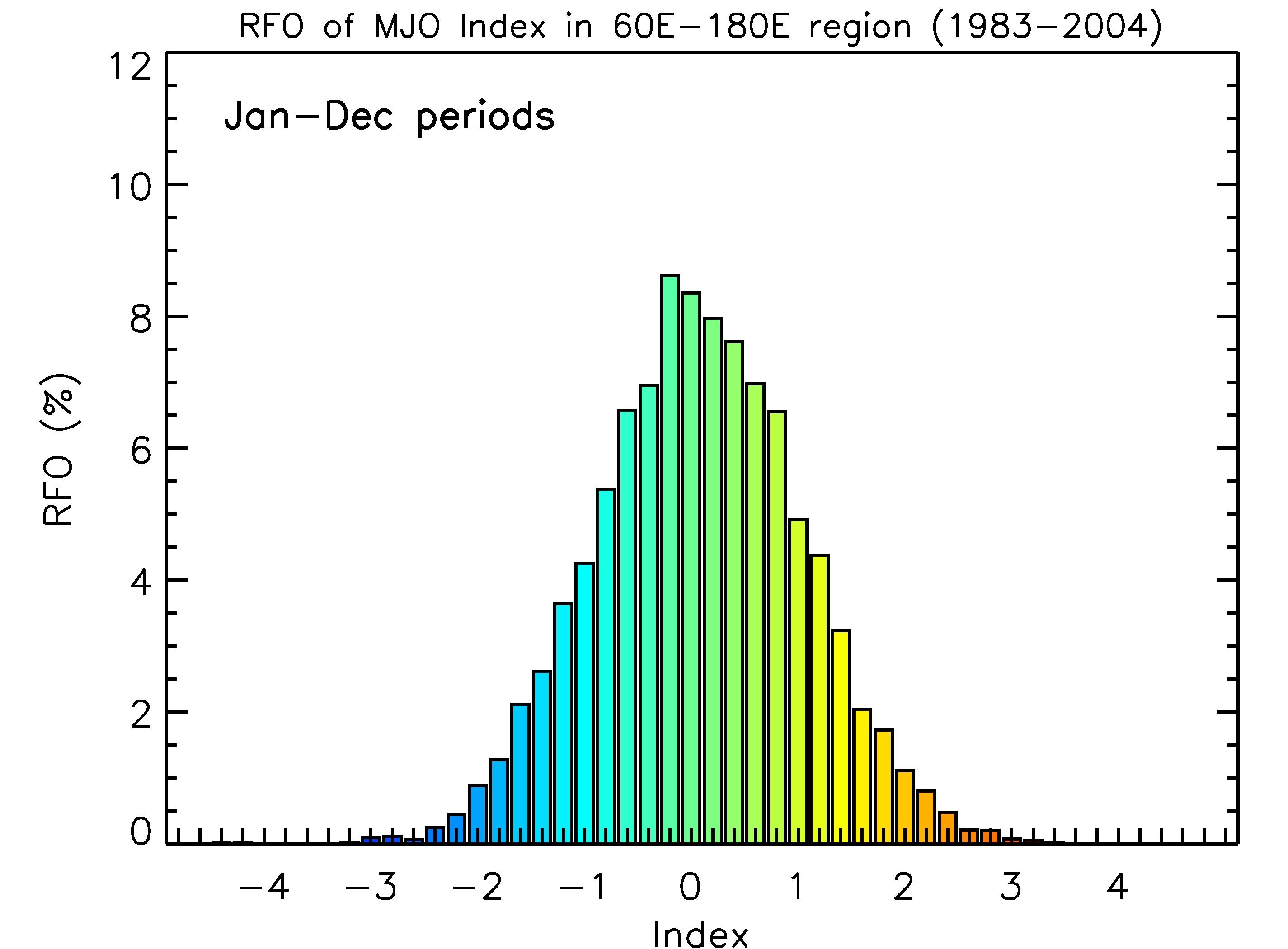The Madden-Julian oscillation is recognized as a fundamental mode of tropical low-frequency variability. Because of its importance for tropical weather prediction, especially its modulation of the precipitation in the Indian and Australian monsoon regions and its possible role in ENSO events, it is crucial to obtain a better understanding of the mechanisms that drive the Madden-Julian Oscillation (MJO).

|
Tropical cloud regimes are defined by cluster analysis of International Satellite Cloud Climatology Project (ISCCP) cloud top pressure (CTP) optical thickness (TAU) joint distributions from the ISCCP D1 dataset (Fig 1) and are used to characterize organized and disorganized convection as a function of MJO phase. The clusters analysis results for the whole tropics covering 21.5 years (1983 2004) show six cloud regimes. Three correspond to regimes dominated by deep convective clouds, cirrostratus (mesoscale) anvils and smaller (unorganized) deep convection with mid-level cumulus congestus. Three others represent suppressed cloud regimes: isolated cirrus, shallow trade cumulus and marine stratocumulus.
|
| Fig.1. ISCCP Histogram |

|
Being interested in interaction between tropical convection and the MJO, the idea is to look at the evolution of weather states as a function of the MJO phase. For this purpose, an MJO index (Fig.2) is used in this study to estimate the date (in pentads) that the peak of an MJO event passes different longitudes. The basic principle is to analyse empirical orthogonal function (EOF) or extended EOF of different fields.
|
| Fig2. MJO Index |

|
Using ISCCP cluster analysis and MJO index products, composite Relative Frequency of Occurrence (RFO) bar-charts of the regimes are formed at seven lag times (in pentads) with respect to an MJO phase index in the period 1983-2004 (Fig.3). The RFOs of the deep convective and anvil regimes increase significantly to the peak phase of MJO. After the peak, the RFO of deep convection decreases immediately. The small-scale convection like shallow cumulus regimes dominate several weeks before the MJO peak, decreasing (increasing) before (after) the peak. The MJO wave is associated with a change of organization of deep convection with more mesoscale systems at MJO peak than otherwise.
|
| Fig3. RFO of cloud regimes |